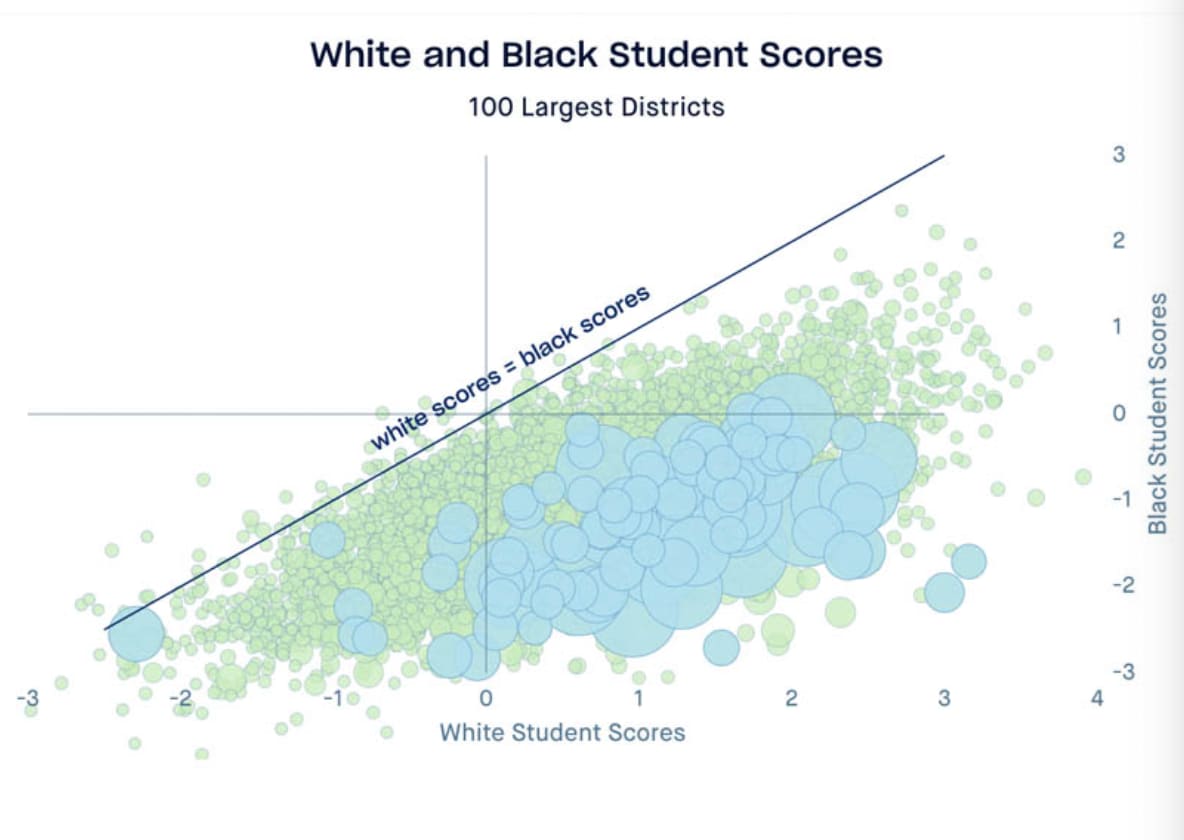This is what the racial education gap in the US looks like right now

Racial achievement gaps in the United States has been slow and unsteady. Image: Unsplash/Santi Vedrí

Get involved with our crowdsourced digital platform to deliver impact at scale
Stay up to date:
Education
- Racial achievement gaps in the United States are narrowing, a Stanford University data project shows.
- But progress has been slow and unsteady – and gaps are still large across much of the country.
- COVID-19 could widen existing inequalities in education.
- The World Economic Forum will be exploring the issues around growing income inequality as part of The Jobs Reset Summit.
In the United States today, the average Black and Hispanic students are about three years ahead of where their parents were in maths skills.
They’re roughly two to three years ahead of them in reading, too.
And while white students’ test scores in these subjects have also improved, they’re not rising by as much. This means racial achievement gaps – a key way of monitoring whether all students have access to a good education – in the country are narrowing, research by Stanford University shows.
But while the trend suggests progress is being made in improving racial educational disparities, it doesn’t show the full picture. Progress, the university says, has been slow and uneven.
Standardized tests
Stanford’s Educational Opportunity Monitoring Project uses average standardized test scores for nine-, 13- and 17-year-olds to measure these achievement gaps.
It’s able to do this because the same tests have been used by the National Assessment of Educational Progress to observe maths and reading skills since the 1970s.

In the following decades, as the above chart shows, achievement gaps have significantly declined in all age groups and in both maths and reading. But it’s been something of a roller-coaster.
Substantial progress stalled at the end of the 1980s and throughout the 1990s and in some cases the gaps grew larger. Since then, they’ve been declining steadily and are now significantly smaller than they were in the 1970s.
But these gaps are still “very large”. In fact, the difference in standardized test scores between white and Black students currently amounts to roughly two years of education. And the gap between white and Hispanic students is almost as big.
Schools not to blame
This disparity exists across the US. Racial achievement gaps have narrowed in most states – although they’ve widened in a small number. In almost all of the country’s 100 largest school districts, though, there’s a big achievement gap between white and Black students.

So why is this? Stanford says its data doesn’t support the common argument that schools themselves are to blame for low average test scores, which is often made because white students tend to live in wealthier communities where schools are presumed to be better.
In fact, it says, the scores actually represent gaps in educational opportunity, which can be traced back to a child’s early experiences. These experiences are formed at home, in childcare and preschool, and in communities – and they provide opportunities to develop socioemotional and academic capacities.
Higher-income families are more likely to be able to provide these opportunities to their children, so a family’s socioeconomic resources are strongly related to educational outcomes, Stanford says. It notes that in the US, Black and Hispanic children’s parents typically have lower incomes and levels of educational attainment than those of white children.
Other factors, such as patterns of residential and school segregation and a state’s educational and social policies, could also have a role in the size of achievement gaps.
And discipline could play its part, too, according to another Stanford study. It linked the achievement gap between Black and white students to the fact that the former are punished more harshly for similar misbehaviour, for example being more likely to be suspended from school than the latter.
Long-term effects
Stanford says using data to map race and poverty could provide the insights needed to help improve educational opportunity for all children.
And this kind of insight is needed now more than ever. The school shutdowns forced by COVID-19 could have exacerbated existing achievement gaps, according to research from McKinsey. The consultancy says the resulting learning losses – predicted to be greater for low-income Black and Hispanic students – could have long-term effects on the economic well-being of the affected children.
Black and Hispanic families are less likely to have high-speed internet at home, making distance learning difficult. And students living in low-income neighbourhoods are less likely to have had decent home schooling, according to the Economic Policy Institute. Earlier in the pandemic, it said coronavirus would "explode" achievement gaps, suggesting it could expand them by the equivalent of another half a year of schooling.
What is the World Economic Forum’s Jobs Reset Summit?
The World Economic Forum will be exploring the issues around growing income inequality, and what to do about it, as part of The Jobs Reset Summit.
The summit will look at ways to shape more inclusive, fair and sustainable organizations, economies and societies as we emerge from the current crisis.
Don't miss any update on this topic
Create a free account and access your personalized content collection with our latest publications and analyses.
License and Republishing
World Economic Forum articles may be republished in accordance with the Creative Commons Attribution-NonCommercial-NoDerivatives 4.0 International Public License, and in accordance with our Terms of Use.
The views expressed in this article are those of the author alone and not the World Economic Forum.
Related topics:
The Agenda Weekly
A weekly update of the most important issues driving the global agenda
You can unsubscribe at any time using the link in our emails. For more details, review our privacy policy.
More on EducationSee all
Natalia Kucirkova
April 17, 2024
Morgan Camp
April 9, 2024
Scott Doughman
March 12, 2024
Genesis Elhussein and Julia Hakspiel
March 1, 2024
Jane Mann
February 28, 2024
Malvika Bhagwat
February 26, 2024






